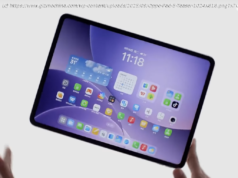As well as promising 25x the processing power compared to the 960’s four big cores, the Kirin 970 paves the way for a mobile AI revolution.
Huawei’s latest flagship mobile chip, the Kirin 970, places a renewed emphasis on AI and machine learning. As well as offering tangible performance boosts, what else does this mean?
While the previous Kirin 960 chip brought machine learning to the table, the emphasis there was on facilitating app monitoring and intelligent memory use, with the purpose of improving general performance. Here, Huawei’s taking that thinking and added steroid-infused rocked fuel.
As well as featuring the same octo-core configuration of the previous model – four 1.8GHz Cortex A53’s backed up with four 2.4GHz Cortex A73 cores – the Kirin 970 comes with ARM’s new Mali G72 MP12 GPU, an upgrade from the G71 MP8 present in the Kirin 960. On top of this, the 970 features another discrete component that’s dedicated to handling the AI processes, something Huawei’s calling the NPU (Neural Processing Unit).
This holy trinity promises 25x the performance with 50x greater efficiency compared to processes handled by a quad-core Cortex A73 cluster; it’s these four cores that’d be doing all the heavy lifting – recording 4k video, playing games, streaming content – on phones like the Huawei P10 Plus anyway, so that’s a good basis for comparison.
Huawei claims that the NPU will allow for faster image recognition and better pictures. How exactly does it help in this regard? When it’s working with the rest of the processor, the Kirin 970 apparently processed 2,000 images 20 times faster than the CPU would otherwise do on its own.
AI tasks will also be augmented by cloud processing, but Huawei’s director of convergent communications marketing Christophe Coutelle told PC Mag that most of the processing will be done locally by the NPU for reasons of both performance and security.
„The benefits of doing on-device AI are speed first, of course, you’re not network-dependent… You guarantee more of the privacy of your customers because as soon as you can run specific apps and processes featuring facial recognition actually on the device, [the data is] safer there than being stored remotely.“
For those times when your phone will need to access the cloud, the going shouldn’t be sluggish, anyway. Network testing has reportedly yielded Qualcomm X20-matching download speeds of 1.2Gbps, thanks to a 5CA-supporting Category 18 LTE modem combined with 4×4 MIMO and 256QAM.
On the subject of LTE, the Kirin 970 chip is apparently the first chip to support two 4G SIMs simultaneously. Previous models would only support 3G speeds via that second SIM slot, so that’s a real plus for people who need two numbers on the go in the same phone.
The cameras of phones running on a Kirin 970 should also be faster, too. The Kirin 970 will support a new dual Image Signal Processor (ISP) which promises improved focus speeds and object tracking, which should allow for less motion blur, better low-light performance as well as fast picture taking in general.
It’s unclear how else the MPU will augment picture taking, or other mobile features. We know that firing off bursts of stills and shooting 4k video should be no problem, but we don’t yet know how if there’s any health apps in the wings that could, for example, monitor all of your selfies for signs of illness or whether that Louis Vuitton bag you’re about to buy online is fake or not.
At Huawei’s stand at IFA, a demo Kirin 970 device running ThunderView, a machine learning app developed by ThunderSoft, a software company which has partnered with chipmakers ARM on this calorie-counting weight loss concept .
Here, the Kirin 970 was gamely powering through a series of images, apparently correctly tagging images of people, dogs and cats, a bit like a mini Voight-Kampff Test in reverse – though nobody on hand could tell us if this was a legit demo or a simulation, which was slightly ironic.
It’s possible that in time we’ll see AI-enhanced health apps that could work in tandem with fitness trackers, face recognition for advanced local security and even possibly banking apps that won’t give you access to your accounts ‚til the front cameras get a good look at your face.
There may even be a separate section for AI-enhanced apps available for download in Google Play, for phones which can handle the computing power required.
Huawei says that the NPU can process 1.92 TeraFLOPS using FP16 (16-bit floating point numbers), a metric which is being increasingly cited with regards to AI performance. As you’d expect, that’s several orders of magnitude below the power of Nvidia and Google’s AI-specific supercomputers. As and when mobile AI takes off, expect to see TeraFLOPS being listed in spec sheets next to CPU and GPU clock speeds.
In order to get more developers writing apps, Richard Yu, CEO of Huawei’s consumer business arm, announced the creation of an open platform for mobile AI. The Kirin 970 chip apparently supports the TensorFlow and Caffe machine learning frameworks. The new iPhone is too rumoured to feature an AI module, and by sheer virtue of Apple’s market share, you can bet that as and when Cupertino gets into the artificial intelligence ring, developer interest will spike.
Either way, it’s far too early for AI to make a huge impact on customers in the months when Kirin 970 devices hit shelves. However that all pans out, we can at least look forwards to those sweet gains in processing power.






